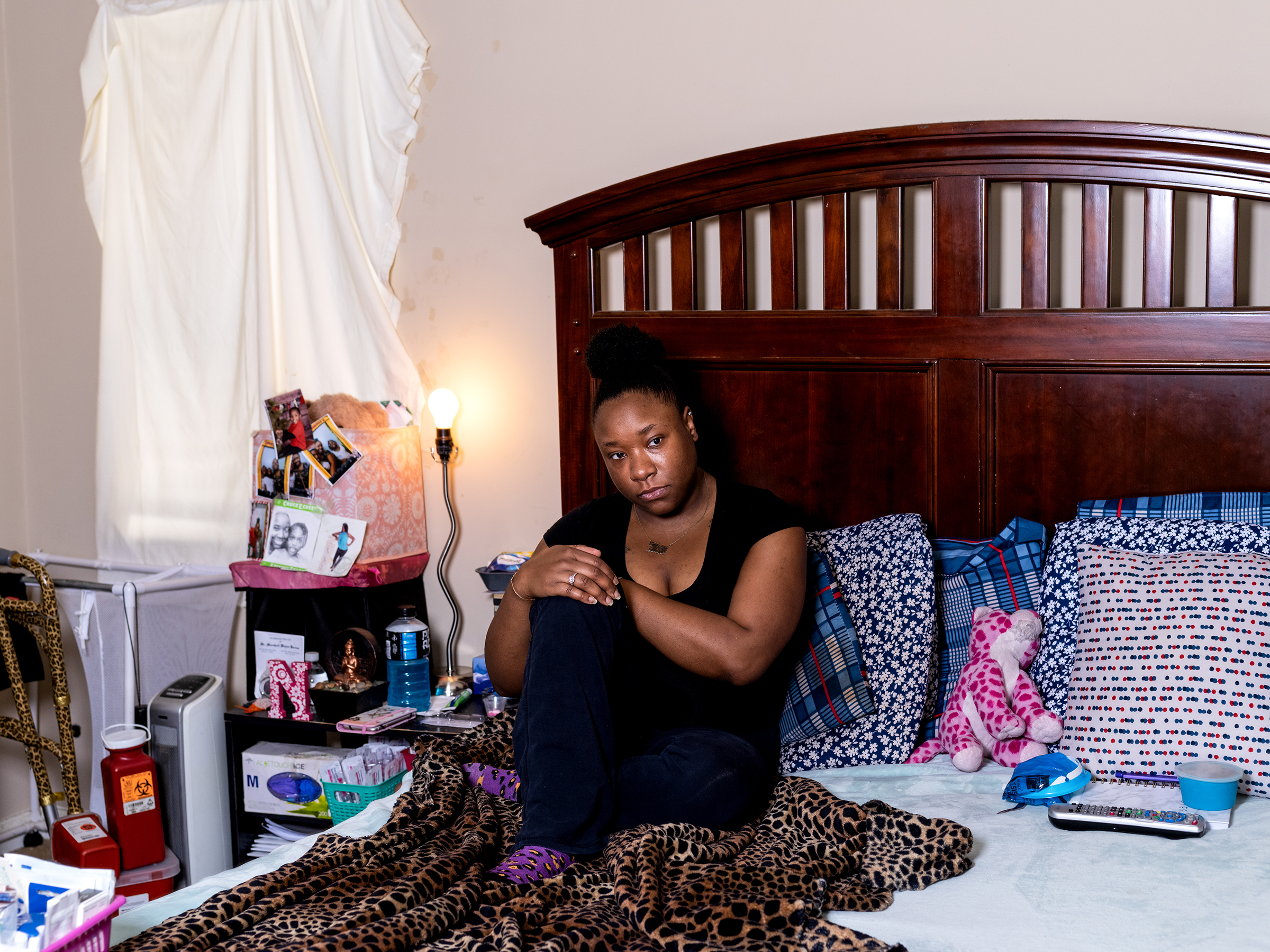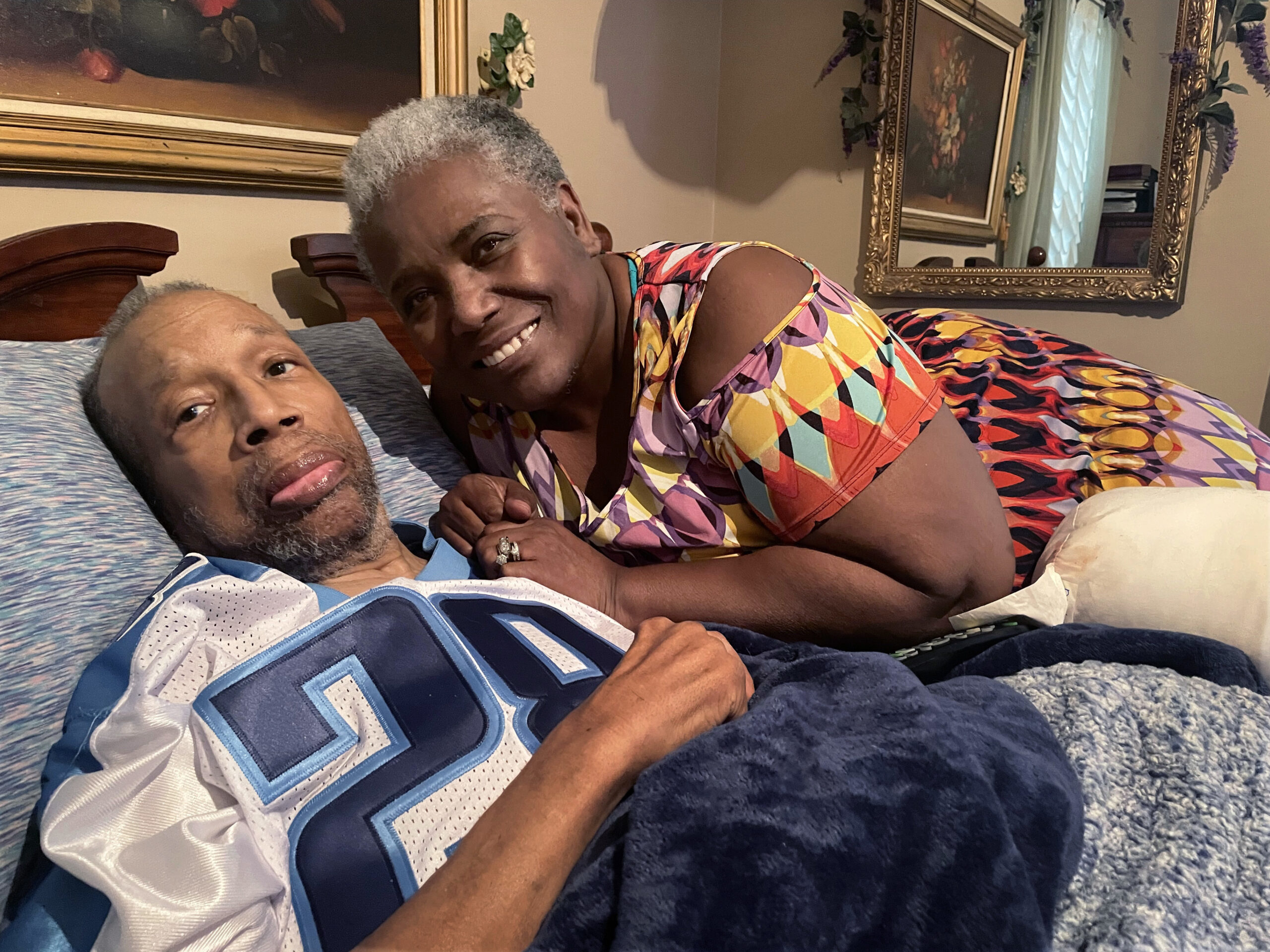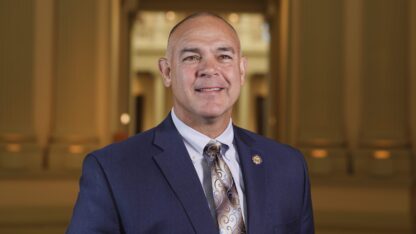India Hardy sits on her mother’s porch in Athens in the afternoon heat, remembering times when her sickle cell disease kept her from living a normal life.
The 32-year-old was diagnosed with the condition as a toddler. It affects about 100,000 people in the U.S., most of them of African or Hispanic descent.
And it causes pain of all kinds, from dull persistent aches to acute flare-ups, called crises.
“My ankles were hurting really bad, and it was time for my daughter to get on the bus. And she’s too young to go on her own,” Hardy said. “I was in so much pain I couldn’t walk. So, she missed school that day.”
When the pain becomes too much to handle, Hardy goes to her local hospital, St. Mary’s. She’d prefer to go to sickle cell clinics in Atlanta or Augusta, but she doesn’t have a car.
Until recently, Hardy said St. Mary’s would get direct shots of hydromorphone. The powerful opioid medication goes by the trade name Dilaudid.
But then, around the start of the year, something changed.
“Now they will actually put that shot in a bag, which is full of fluids. So, it’s like you’re getting small drips of pain medicine,” she said. “It’s like torture.”
Hardy said the diluted medicine doesn’t give her the same relief as a direct injection. It’s the same for her brother, Rico, who has sickle cell and also gets treatment at St. Mary’s.
Anesha Barnes said she feels singled out by the new treatment plan. The 28-year-old has struggled with sickle cell pain for most of her life.
She sat in her dark bedroom and walked through her daily medication regimen: self-administered shots of a blood thinner, the oxycodone/acetaminophen combination sold as Percocet, and extended-release tablets of morphine.
But often, the pain is often too much for Barnes to handle on her own. That’s when she heads to St. Mary’s.
“Sickle cell pain has a mind of its own,” said Anesha Barnes, who’s had the disease since she was a baby. She says the longer she stays in a pain crisis, the harder it is to break out of it. (Johnathon Kelso/For WABE)
Many of the same drugs that sickle cell patients need are fueling an addiction and overdose epidemic in the U.S. that’s claimed tens of thousands of lives.
And Hardy knows some people take advantage of their sickle cell disease to get medication, but she said she’s not one of them.
“Even in [the sickle cell] community, some people abuse the system,” she said. “We shouldn’t have to pay for what other people do. We shouldn’t. It’s not fair,” she said.
Hospital staff say most sickle cell patients feel the new treatment plan at St. Mary’s is helpful to them and treats their pain. They stress it’s not that different from the way they used to do things.
“The total amount of medication has not changed. The only difference is the medication is being poured in, rather than shoved in,” said Dr. Lewis Earnest, chief of emergency medicine at St. Mary’s.
Most sickle cell patients deal with the predominant, the biggest amount of our pain at home. By the time we go to the hospital, we’re going out of desperation.
Lakiea Bailey, who leads the Sickle Cell Community Consortium
He said the new protocol is meant to cut down on the “euphoria” patients feel when getting certain pain medication.
Earnest said he never thought the new treatment protocol would be seen as discriminatory. It’s simply an effort to serve patients better. That means treating pain in a way that doesn’t lead to dependence.
“We’re trying to alleviate suffering, but we’re also trying not to create addiction, and so we’re trying to find that balance,” he said. “Sometimes, it’s harder than others.”
Unequal treatment is nothing new, said Lakiea Bailey, who leads the Sickle Cell Community Consortium, a patient-advocacy group.
“There are numerous horror stories: from being flat out turned away to being treated horribly when seeking care,” she said.
About a third of African-Americans reported experiencing discrimination when going to the doctor in a recent poll, and mortality rates have been on the rise for adults with sickle cell from a lack of access to quality care.
Bailey, who has sickle cell, said most people with the disease don’t want to go to a hospital unless they have to.
They try to manage their pain on their own or by going to specialized clinics where doctors are familiar with treating sickle cell patients.
“Most sickle cell patients deal with the predominant, the biggest amount of our pain at home,” she said. “By the time we go to the hospital, we’re going out of desperation.”
Still, Bailey understands this is a tough time for medical providers. It’s not hard to find news stories of doctors spending decades in prison for handing out too much pain medication.
“No one wants their career hurt because they were trying to help patients. So, I get how delicate and dangerous that has to seem,” Bailey said.
She thinks doctors and advocates need to spend more time discussing the challenges they each face. That way they might be able to work through them.
That’s one goal of the Emergency Department Sickle Cell Care Coalition. The group, created by the American College of Emergency Physicians, aims to improve the care that sickle cell patients receive in emergency rooms.
“I think there’s a lack of trust from both [doctors and patients], and we have to get beyond the polarized perspectives and work together,” said Dr. Jon Mark Hirshon, who leads the group.
Hirshon said the opioid epidemic has changed how providers think about treating pain. But that shouldn’t stop them from listening to their patients.
“Everyone feels pain very differently,” he said. “The question of whether or not the pain medications are adequately effective is something that [doctors] need to ask the patient to make sure that they’re getting adequate support for the pain that they have.”
Back on her mom’s porch in Athens, India Hardy said she’s not getting relief for her sickle cell pain. She thinks her local hospital, St. Mary’s, should treat all their patients the same way.
“It’s just really frustrating, because you go to them for help expecting to get equal help, and you don’t,” she said.
Hardy filed a complaint with the hospital and the federal government, but she says nothing has changed at St. Mary’s.
(Hospital officials say they received a federal complaint about extended wait times in their emergency room. They say they’re investigating the matter.)
So, for now, Hardy’s thinking about leaving Athens to move closer to a specialized sickle cell clinic.
She said Athens is her home. It’s where her family lives. It’s where she’s raising her daughter. But she can’t find relief there.










